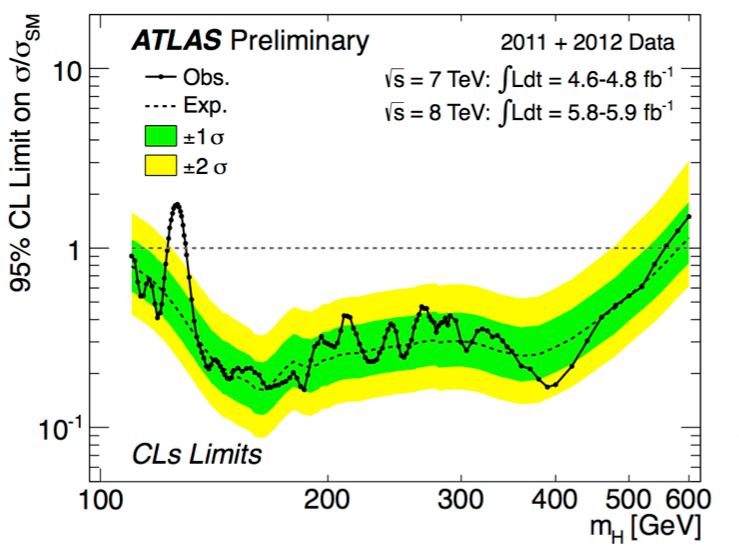
Figure 1: Result of the Standard Model Higgs search using all the data collected by the ATLAS detector at √s = 7 and 8 TeV up to the 18th of June 2012 corresponding to almost 11 fb-1. The black full line shows the observed limit on the production cross-section of a hypothesized Higgs particle with a mass of mH in units of the predicted Standard Model cross-section. A Standard model Higgs boson is excluded in the mass ranges where the observed limit lies below 1. The dashed line shows the expected limit in the absence of a Higgs signal. The green and yellow areas show the 1 and 2 standard deviation (σ) bands for the expected limit. In the region around 126 GeV the observed limit shows an excess of events with a 5σ local significance. A similar excess was observed by the CMS experiment in the same mass region.
